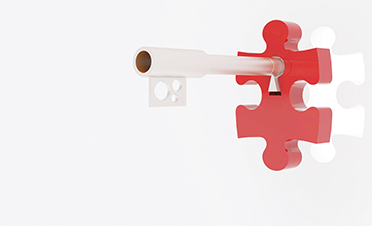Secondary capital has helped Pacific Northwest Ironworkers Federal Credit Union($17.8M, Portland, OR) make more loans and money. It’s also helped members ride the latest up-cycle in construction.
Credit union CEO Teri Robinson credits the infusion of capital $500,000 altogether with empowering a strategy that has pulled the institution back from the brink of failing. Today, it posts some of the strongest numbers among credit unions in its asset-based peer category in the country.
Pacific Northwest Ironworkers FCU is accustomed to serving workers in a cyclical industry. But membership unemployment reached as high as 30% after the 2008 financial crisis hit and the ensuing recession dried up capital investment in the kind of big infrastructure construction that puts the credit union’s members to work.
CU QUICK FACTS
Pacific Northwest Ironworkers FCU
Data as of 03.31.15
HQ: Portland, OR
ASSETS: $17.8M
MEMBERS: 5,876
BRANCHES: 3
12-MO SHARE GROWTH: 36.6%
12-MO LOAN GROWTH: 39.4%
ROA: 2.90%
Robinson took the reins at Pacific Northwest Ironworkers FCU in March 2010 and watched as membership shrunk and lending flat-lined. The credit union’s bottom line was further hammered by the $120,000 in capital it lost to the failure of its two corporate credit unions and another $70,500 it had to pay out to the NCUA’s corporate stabilization fund.
After the NCUA hit the credit union with a Prompt Corrective Action order and Letter of Understanding Agreement when the credit union’s net worth fell to 4.21%, Robinson says it was time to act.
I was practically in tears, she says. I was wondering if we could even go on. ContentMiddleAd
Robinson turned for help to veteran consultant Scott Butterfield and to the National Federation of Community Development Credit Unions, who gave her confidence and a $250,000 cash injection that lifted her net worth immediately to 6.61% and gave the credit union some breathing room and lending power.
Then the seven-employee, three-branch credit union started aggressively providing the loans and financial counseling that has led to dramatic growth. In fact, Robinson secured a second note for $250,000 from another credit union in the Pacific Northwest that she declined to name. According to Robinson, that second infusion came as the result of working out a plan with her NCUA examiners.
Complying with the agency regarding how the credit union reports the loans on its ledger has not been a problem, Robinson says, adding she wishes the NCUA would more aggressively encourage credit unions to lend secondary capital to each other.
For more on this strategy, read, Why Credit Unions Need Supplemental Capital on CreditUnions.com.
Why sit there 40% loaned out? Robinson says. Look at it as a business loan. The loan’s not insured, but the credit union itself is. The NCUA has been doing that for 60 years. You’re doing business with someone who undergoes annual audits and examinations, and you’re getting 5%. Where else can you get those numbers?
The approach has yielded strong numbers for Pacific Northwest Ironworkers FCU. The credit union has nearly doubled its assets in the past three years, from $10.04 million in June 2012 to $19.71 million in June 2015. Loan volume has jumped from $7.56 million then to $18.40 million now.
And according to the latest data from Callahan Associate, Pacific Northwest Ironworkers FCU ranks in the top 1% of the 2,087 credit unions of $10 million to $50 million in multiple metrics. Most notably, it is eighth in share growth, 10th in return on assets, 26th in loan growth, and 27th in income growth.
You can’t just assume that secondary capital will make you safe. You have to immediately use that money to make money.
Paying It Forward, Paying It Back
The credit union has repaid $50,000 of its secondary capital loans and is more than 100% loaned out. And now that its net worth ratio is comfortably above 7%, it is no longer under a PCA. Most importantly, we’ve been able to help three times as many union ironworkers in ways some of them never been helped before, like being able to buy a house, Robinson says.
Pacific Northwest Ironworkers FCU pays 5% for the secondary capital. But it charges higher-than-peer interest rates to make up for that and to balance the risk. And its members drawn from the 100,000 or so union ironworkers based in Alaska, Idaho, Montana, Oregon and Washington are good at paying it back.
And the ones who don’t are not the ones people might expect.
Probably 75% of the money I’ve lost has come from A-plus to B borrowers, Robinson says.
She’s satisfied, and so are her examiners.
I’m grateful the NCUA had the faith in our vision and and could see that we were going to use it not as life support but as a way to grow, Robinson says. Our local examiners saw that, too, and have played a part in our success.
Robinson says the NCUA told her only 28% of credit unions hit with a PCA come out of it. She now savors the opportunity to share what secondary capital can do for a credit union that uses it correctly.
I’ve gotten pushback about having it, but people just don’t understand it, she says.You can’t just assume that money will make you safe. You have to immediately use that money to make money. When you do that, it’s a great thing.
You Might Also Enjoy
-
A Capital Initiative At Fairfax County Credit Union
-
Why Credit Unions Need Supplemental Capital
-
Secondary Capital Has Its Place, But Not As RBC
